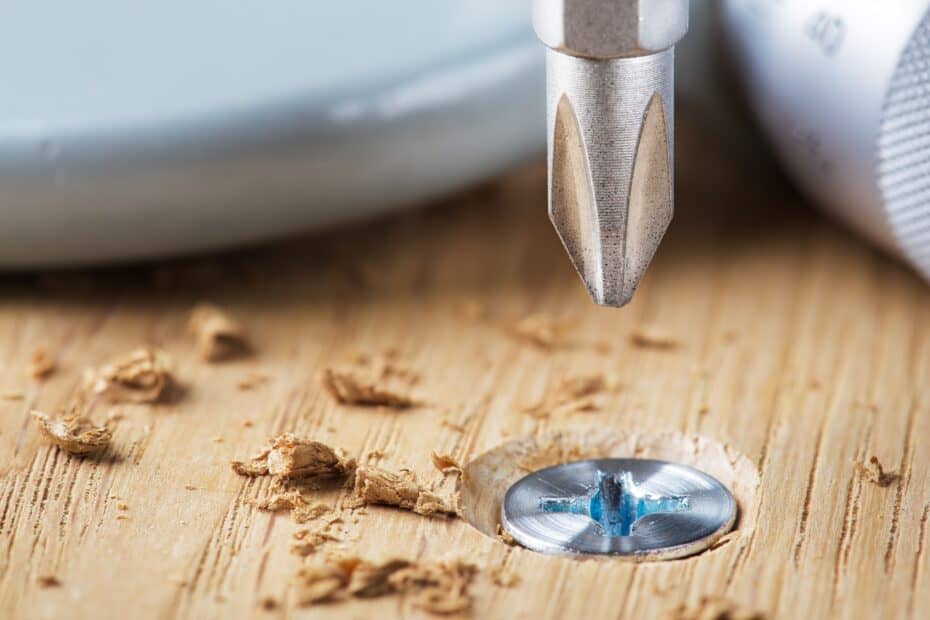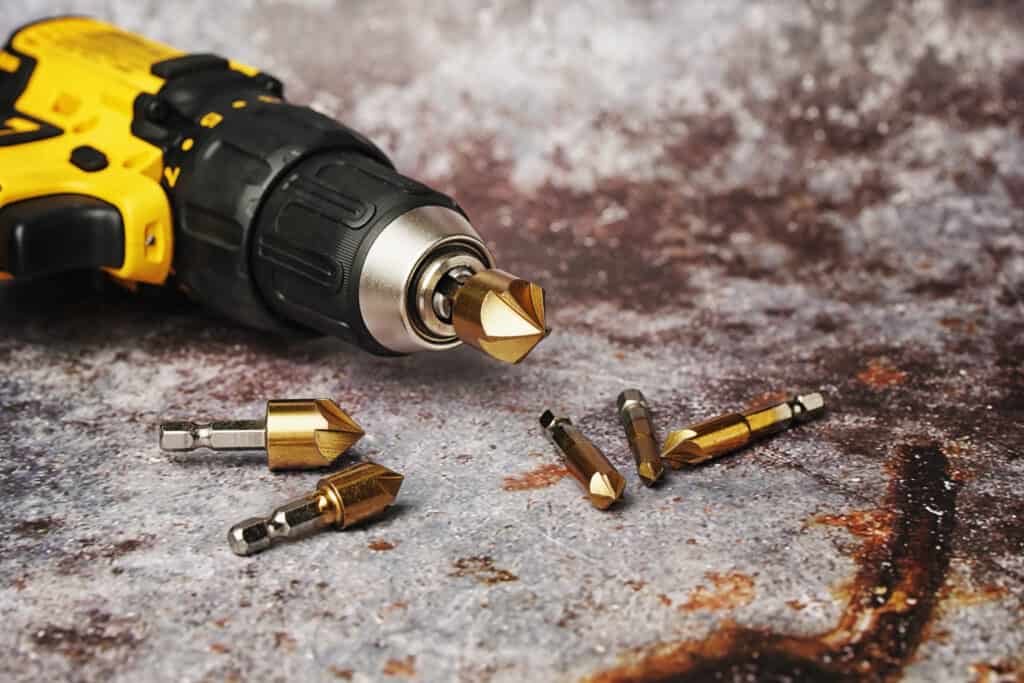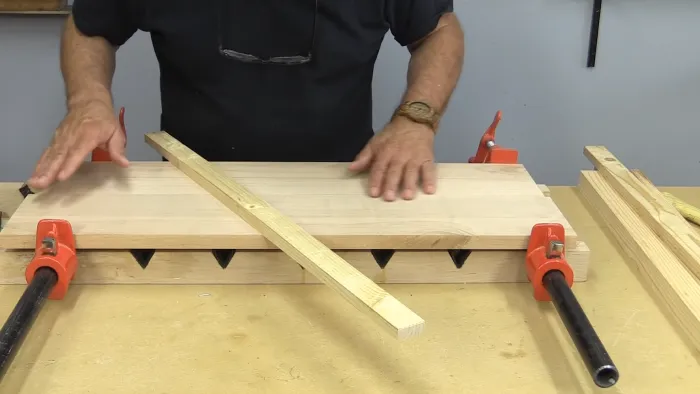WoodenuKnow.com is a participant in the Amazon Services LLC Associates Program, an affiliate advertising program designed to provide a means for sites to earn advertising fees by advertising and linking to Amazon.com and may earn from qualifying purchases.
Woodworking projects often require the use of screws for a secure, stable connection between different pieces. In order to achieve a professional and visually appealing finish, woodworkers employ a technique known as countersinking. Countersinking involves creating a conical-shaped hole in the wood that allows the screw head to sit flush with, or even below, the surface. This not only results in a more polished appearance but also reduces the risk of the screw head snagging on other objects or causing injury.
A variety of tools can be used for countersinking, including dedicated countersink bits and combination drill bits that feature both a countersink and a pilot hole component. This allows a woodworker to first create the countersink, followed by the pilot hole for the screw. It’s crucial to choose the right size and shape of the countersink, as well as the appropriate material for the job. Woodworkers should also be mindful of additional techniques and considerations, such as counterboring, and ensure that their tools are well-maintained for the best results.
Key Takeaways
- Countersinking involves creating a conical hole for a flush screw head in woodworking projects.
- A variety of tools, including countersink bits, can be used to achieve the desired countersink shape and size.
- Consider additional techniques, materials, and tool maintenance for optimum countersinking results.
Understanding Countersinks in Woodworking
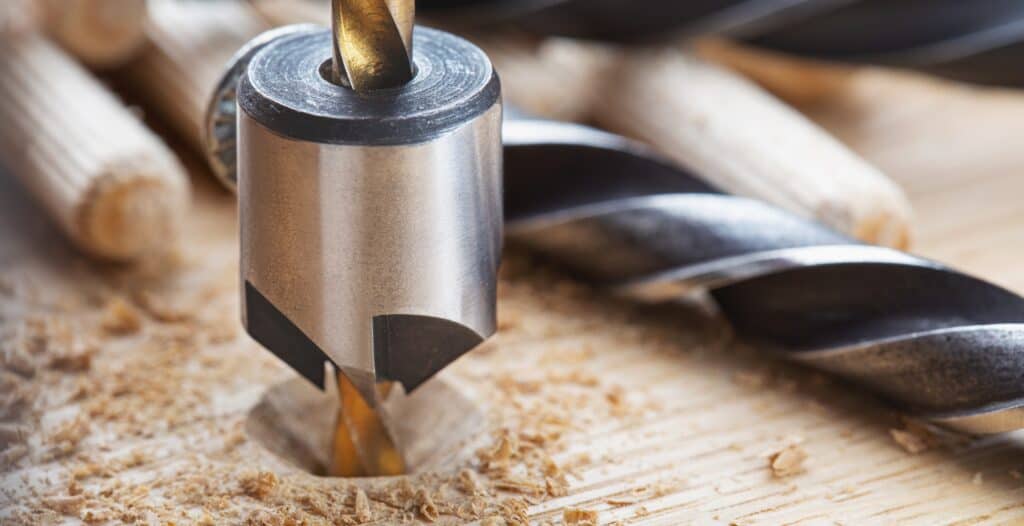
What is a Countersink?
A countersink is a conical-shaped hole created in a wooden workpiece to allow flat-head screws to sit flush with the surface. In woodworking, it is a crucial technique to ensure that the screw head doesn’t protrude, providing a neat and professional finish. The process involves using a special drill bit called a countersink bit, which drills the pilot hole and the countersink hole simultaneously or separately, depending on the type of bit.
Role of Countersinks in Woodworking
Countersinks play a significant role in woodworking for several reasons:
- Aesthetic appeal: Countersinking enables the screw head to be flush with the surface, providing a clean and professional appearance. This is essential for projects where the screw heads will be visible in the final product.
- Precise joinery: Countersinks ensure that the screw head doesn’t protrude from the surface, allowing for tight and accurate connections between joined wooden pieces.
- Compatibility with certain fasteners: Some fasteners, such as flat-head screws, require countersinking to be properly seated and functional.
- Preventing wood splitting: Pre-drilling countersink holes help to avoid splitting or cracking the wood when driving in screws, especially in dense or brittle materials.
Using countersinking in various applications will help woodworkers achieve a more professional result in their projects.
Tools Used in Countersinking
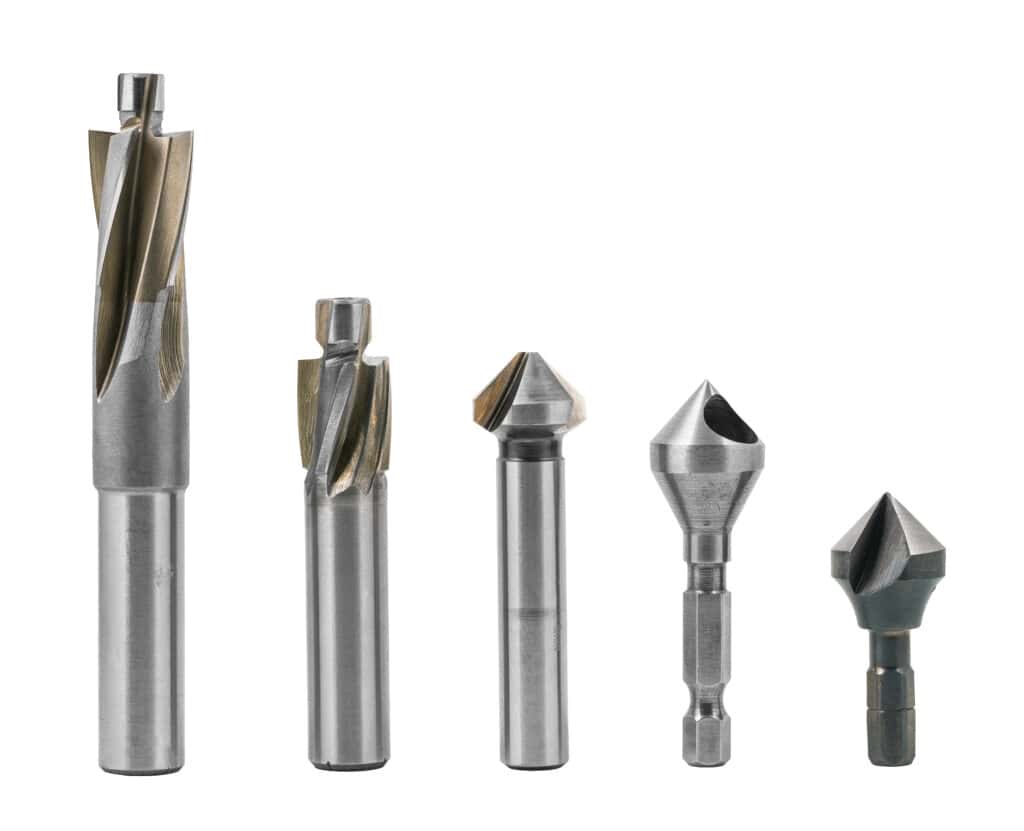
Countersink Bits
Countersink bits are specially designed tools that create conical-shaped holes in wood or other materials. These holes allow screws with flat head designs to sit flush with the surface. Typically, countersink bits come in various sizes and angles, such as 82 degrees or 90 degrees, to accommodate different screw head designs.
Drill Bits
In addition to countersink bits, standard drill bits are used to create pilot holes before countersinking. Pilot holes help prevent wood from splitting and make it easier to drive screws. It’s essential to choose the appropriate drill bit size based on the screw size being used.
Drill Press
A drill press is a stationary machine used for precise drilling operations. For countersinking tasks in woodworking, a drill press ensures correct alignment and depth for both the pilot hole and countersink hole. Using a drill press can improve the accuracy and consistency of your countersinking tasks compared to using a handheld drill.
Screwdriver Bit
Screwdriver bits, also known as driver bits, are used with a power drill or screwdriver to drive screws into countersunk holes. Common screwdriver bit types include flathead, Phillips, and hexagonal shanks. Choosing the right screwdriver bit is crucial for proper screw placement and ensuring the screw sits flush with the material surface.
Twist Bit
Twist bits are the most common type of drill bits used for creating pilot holes. These bits feature a spiral design and sharp cutting edges that remove the material as they rotate in the drill. When working with denser materials such as hardwoods, twist bits are especially effective at drilling clean and accurate pilot holes before countersinking.
Fundamentals of Countersinking
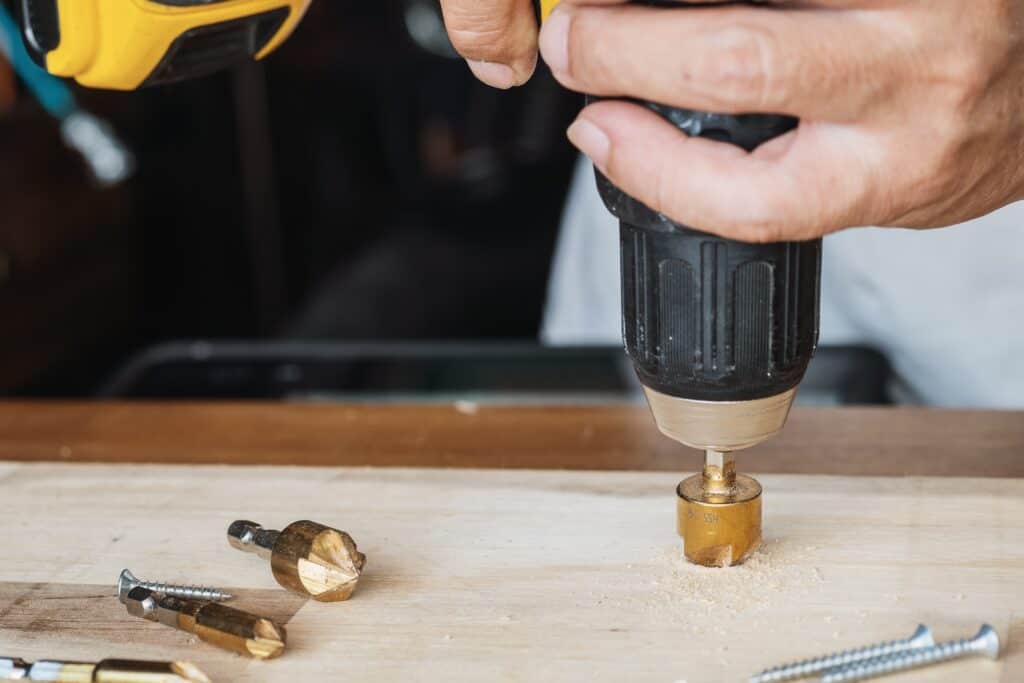
Countersinking is a woodworking technique used to create a conical-shaped hole in a wood surface. It provides a recess that allows flat-head screws to sit flush with the surface. This section covers the basics of countersinking, focusing on three key steps: preparing the wood surface, drilling pilot holes, and applying the countersink.
Preparing the Wood Surface
Before you begin countersinking, it is essential to have a clean and smooth wood surface. Follow these steps to prepare the wood for countersinking:
- Inspect the wood surface: Check for any irregularities or blemishes that may affect the countersinking process, and ensure that it is free from knots or cracks.
- Sand the surface: Use sandpaper or an electric sander to smooth the surface, removing any rough spots or uneven areas. Start with a coarse grit, moving to a finer grit for a smooth finish.
Drilling Pilot Holes
Pilot holes are essential in guiding the countersink bit and preventing the wood from splitting during the countersinking process. Follow these steps to drill pilot holes for a smooth countersinking experience:
- Mark the drilling locations: Using a pencil and a ruler, measure and mark the precise locations where you need to drill the pilot holes.
- Select the appropriate drill bit: Choose a drill bit that is slightly smaller than the diameter of the screw you will be using. This ensures a snug fit for the screw.
- Drill the pilot holes: Carefully drill the pilot holes, making sure to keep the drill bit straight and steady as you go.
Applying the Countersink
With pilot holes in place, the next step is to apply the countersink to create the conical recess for the flat head screws. Follow these steps to properly countersink your holes:
- Choose the correct countersink bit: Select a countersink bit with the same angle as the screw head. Commonly used angles are 82 degrees for wood screws.
- Set the countersink depth: Adjust the countersink bit depth by setting the stop collar on the bit to control how deep the countersink will cut into the wood.
- Countersink the pilot holes: Carefully align the countersink bit with the pilot hole and begin drilling. Make sure to avoid over-drilling, as this could cause damage to the wood surface.
Check this video for the basics of making a Countersink:
By following these steps, you can ensure accurate and effective countersinking for a professional-looking final result.
Understanding the Sizes and Shapes of Countersinks
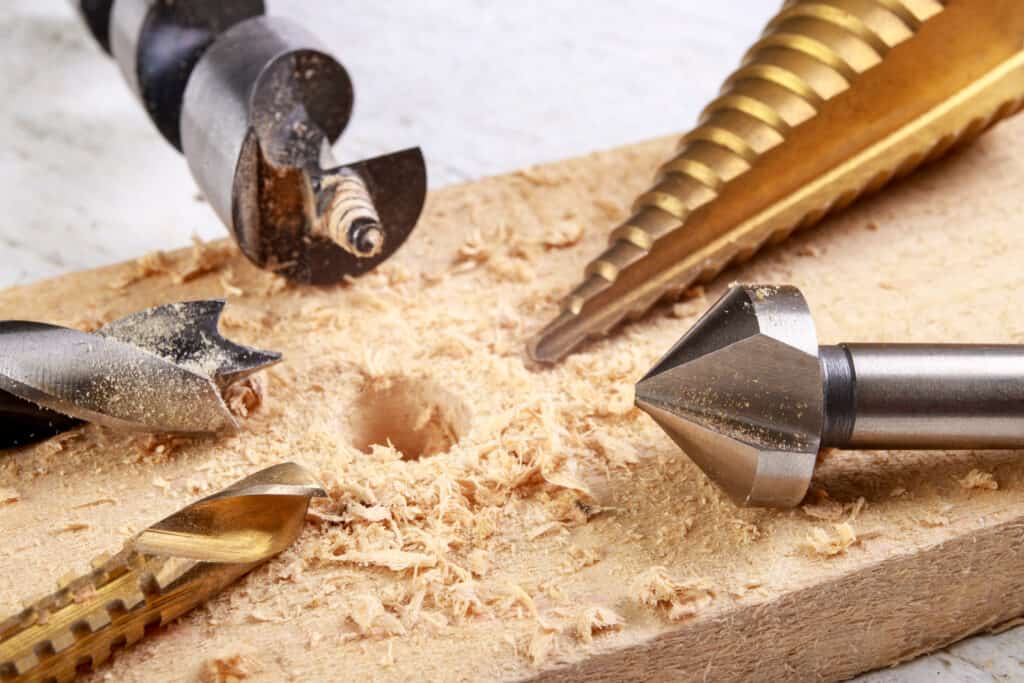
Size Variables
In woodworking, countersinks come in various sizes to accommodate different types of fasteners. The key dimensions to consider when selecting a countersink are diameter and angle. The diameter of the countersink should match the fastener’s head, while the angle should be compatible with the fastener’s profile. Common angles include 60°, 82°, and 90°.
To determine the right size of a countersink for your project, you should consider these variables:
- Fastener size/type: Different fasteners, such as wood screws or bolts, require different countersink sizes.
- Material thickness: The thickness of the material you are working with helps determine the depth of the countersink hole.
- Fit/clearance requirements: The fit or clearance you need for your fastener within the countersink hole.
Countersink Shapes
There are multiple shapes of countersinks available for various applications. The two most common types of countersinks used in woodworking include:
- Cross-hole countersinks: These have a cone-shaped form with a cutting edge created by a hole that passes through the side of the cone. The intersection of the hole and the cone forms the cutting edge of the tool.
- Zero-flute or Weldon-style countersinks: These countersinks are also cone-shaped, but they feature a cutting edge at the tip of the cone instead of having a hole.
In addition to these countersink shapes, other specialized designs can be found for specific woodworking applications. Regardless of which shape is used, the primary function of a countersink is to create a hole that allows a flat-head screw or similar fastener to sit flush with or below the workpiece surface. Remember to match the countersink’s size and shape to the specific fastener and project requirements, ensuring a secure and visually appealing result.
Materials Suitable for Countersinking
Wood
Wood is the most common material for countersinking. In woodworking, countersinking is essential for achieving flush and aesthetically pleasing surfaces. To countersink in wood, use a combination pilot hole and countersinking bit, also known as a countersinking bit. This tool simultaneously drills a pilot hole and cuts a conical-shaped recess for the screw head. Softwoods and hardwoods can both be countersunk; however, dense hardwoods might require a bit made from a higher-grade material like high-speed steel (HSS) or cobalt for efficient performance.
Metal
Countersinking can also be performed on metal materials, such as aluminum, brass, and steel. However, it’s essential to use a countersink designed specifically for metalwork. High-speed steel (HSS) or cobalt countersinks are often recommended for metal as they provide clean, burr-free results. When countersinking in metal, be aware of the recommended speeds and feeds to avoid overheating the tool and workpiece. Lubricating the countersink with cutting oil is also suggested for better performance and longer tool life. The general formula for determining the appropriate countersink diameter in metal is:
Countersink diameter = 1.5 x Bolt Size Hole Diameter
Plastic
Plastics can also be countersunk, although careful consideration should be given to the type of plastic being worked with due to the range of properties within this material class. Some plastics may be too brittle or soft for countersinking, leading to chip-out or deformation around the hole. Use sharp countersinking tools and adjust the speed of the drill to the specific type of plastic. A common practice for countersinking in plastic is to use a zero-flute countersink as it generates less heat and reduces the risk of melting the plastic material.
Additional Techniques and Considerations
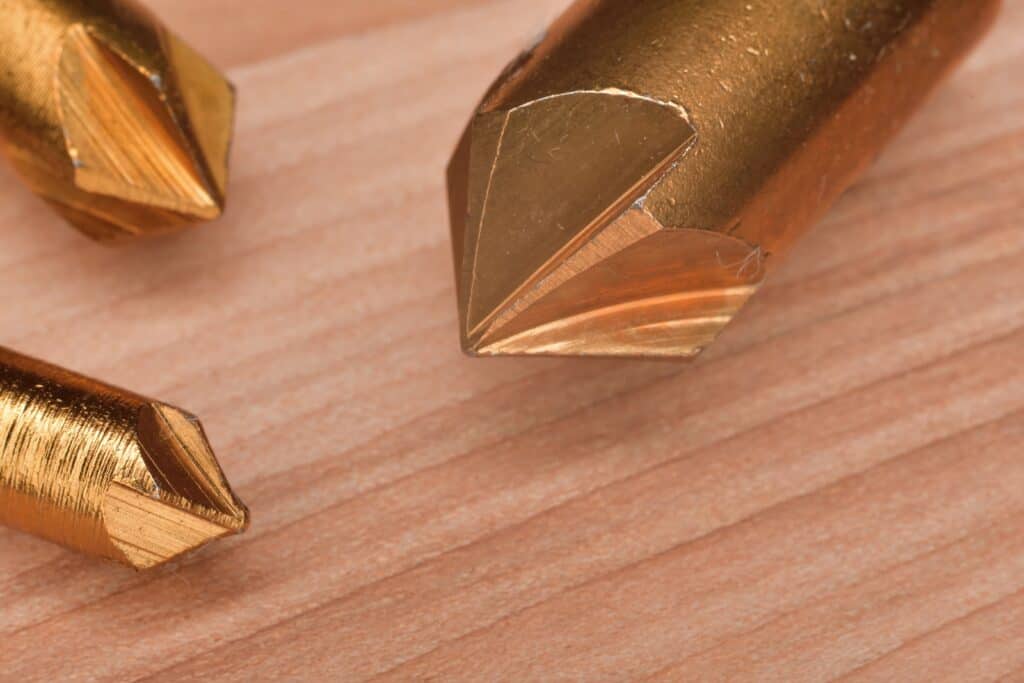
When working with countersinks in woodworking, there are several additional techniques and considerations to keep in mind for achieving the best results.
Depth and Bottom Considerations: The depth of a countersink is crucial in ensuring that the screw sits flush with the workpiece. To determine the appropriate depth, measure the thickness of the screw head and adjust your countersink bit accordingly. Additionally, the bottom of the countersink should be flat and smooth to make adequate contact with the screw head.
Machining Methods: Countersinking is a machining technique used to create a conical or chamfered hole. Some woodworkers prefer to countersink first and then drill the pilot hole, resulting in a smoother and more accurate countersink. This method can be particularly useful when working with denser wood that may cause the countersink bit to wander.
Chamfering and Edges: A clean chamfer around the countersink hole is crucial for both aesthetic and functional reasons. A neat chamfer prevents splintering and provides a smooth transition between the hole and the wood surface. This can be achieved by using a sharp countersink bit and applying gentle pressure while drilling.
Force and Feed Rate: Consistent force and feed rate can have a significant impact on the quality of the countersink hole. Excessive force may cause the bit to burn or damage the wood, while insufficient force may lead to an inaccurate or uneven hole. It is essential to practice proper technique when countersinking, applying steady and controlled force throughout the process.
In summary, when countersinking in woodworking, it is vital to consider factors such as depth, bottom, flush, machining, chamfer, edges, and force for optimal results. By carefully considering these aspects and using the appropriate tools and techniques, you can confidently create professional-looking countersink holes in your woodworking projects.
Maintenance and Product Recommendations
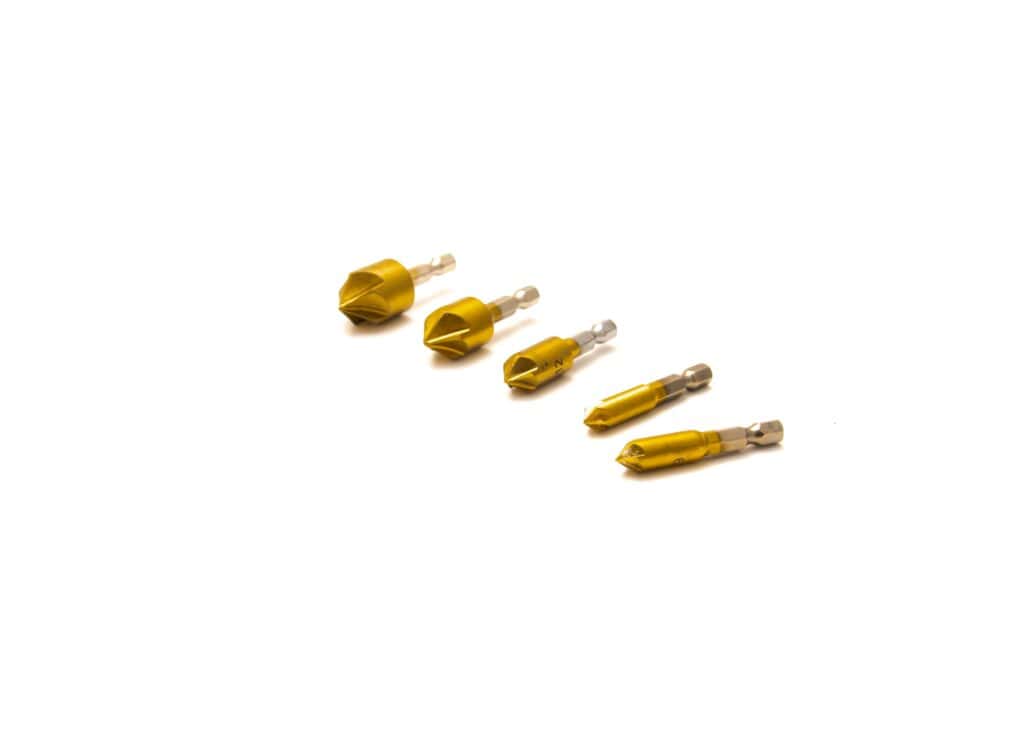
Maintaining your countersink bits and choosing the right products play a crucial role in achieving perfect countersinks in woodworking projects. Here are some tips and product recommendations to ensure the longevity and efficiency of your countersink tools.
Drill Bits
One option is the Snappy Tools 40017 5-Piece Countersink Drill Bit Set. This premium set includes five different countersinks, each with a different size and angle to suit a variety of needs. Made from high-speed steel, these bits are durable and long-lasting, making them a great investment for any woodworking enthusiast.
Other mid-range recommended options are the FTG USA Countersink Drill Bit Set and the DEWALT Countersink Drill Bit Set #6, #8, #10, 3-Piece.
For those on a budget, the IRWIN Tools 1877792 Countersink Drill Bit is a great choice. This affordable option features a single flute design for clean, precise cuts, and is made from high-speed steel for durability.
A related option is the Kreg KMA3200 Shelf Pin Drilling Jig. While not strictly a countersink, this jig is designed to help woodworkers drill perfectly aligned holes for shelf pins. The included bit also features a built-in countersink, making it a versatile addition to any workshop.
Supplies
It is essential to clean and sharpen your countersink bits regularly. For this, you might need a set of sharpening stones, a sharpening jig, and a honing oil or lubricant. Keep a brass or nylon brush handy for cleaning debris and wood particles from your countersink bits.
Stain and Gel Polyurethane
Choosing the right stain and finish for your countersink holes can help enhance the appearance and durability of your overall project. Opt for a quality stain or gel polyurethane, which ensures a smooth and protective finish. Premium brands like Minwax and Varathane offer a wide range of wood stains and finishes to suit various woodworking applications.
Paint
If you prefer to paint your woodworking projects, selecting a durable and long-lasting paint is crucial. High-quality paints from brands like Benjamin Moore and Sherwin-Williams offer excellent coverage and protection for your woodworking projects, hiding countersink holes and other imperfections.
Premium Product Recommendations
To achieve accurate countersinks, consider investing in premium countersink bits made from high-performance materials such as carbide or high-speed steel. Some popular carbide-tipped countersink options include Whiteside 600 82° Countersink and Amana Tool MR0110 Carbide-Tipped.
Dado Blade Set
A dado blade set is another essential tool for creating precise joints and cuts in woodworking. High-quality dado blade sets from reputable brands like Freud, Oshlun, and Irwin will help you achieve clean and accurate cuts for various woodworking applications.
To conclude, keep your countersink bits well-maintained, use high-quality stains, paints, and finishes, and invest in premium tools and accessories to ensure impressive results in your woodworking projects.
Countersinks vs Counterbores:Â What is the difference?
While countersinks and counterbores are both used to create recesses for the head of a screw or bolt, they serve different purposes and produce different hole shapes.
Countersinking involves creating a conical-shaped hole that allows flat-head screws to sit flush with the workpiece’s surface.
Counterboring involves drilling a larger hole than the screw or bolt to accommodate different types of head designs, often leaving a portion of the screw or bolt head visible, with a flat bottom to accommodate the bolt head.
See this video for more details on Countersinks vs. Counterbores:
Common Countersinking Questions
Why Use Tops instead of Screws?
While traditional wood screws are the more commonly used fasteners in woodworking projects, there are situations where tops, also known as nails or bolts with decorative heads, maybe a preferred choice. Some advantages of using tops include:
- Aesthetics: Tops can provide a more appealing and finished look to a piece, particularly when they are used to cover visible countersink holes. They can also be made of a variety of materials, allowing for customization and coordination with the overall design of a piece.
- Ease of installation: Since tops do not require a countersink hole, they can be installed more quickly than screws. Additionally, they do not require a separate wood plug to cover the hole, further simplifying the installation process.
- Increased holding power: In some cases, tops may provide better-holding power than wood screws, particularly when working with dense wood. A good example is the use of ring-shank nails or interlocking bolts in heavy timber construction.
In summary, the choice between wood screws and tops depends on factors such as the desired look, ease of installation, and the specific requirements of the woodworking project.
Which tool should be used for countersinking wood?
Countersinking wood requires a countersink drill bit, which is specifically designed with a tapered cutting edge to create the appropriate hole geometry. There are various types of countersink drill bits available, depending on the desired angle, size, and material.
How can one choose the right countersink drill bit?
Choosing the correct countersink drill bit depends on the type and size of the screw being used, as well as the project requirements. Consider the screw head’s shape and diameter and the desired countersink angle and depth. Ensure the bit is made of a suitable material for woodworking, such as high-speed steel or carbide.
What is the ideal angle for a wood screw countersink?
The ideal countersink angle for wood screws typically falls between 82 and 90 degrees. It should align with the angle of the screw’s head for a snug fit. This ensures that the screw sits flush with the wood surface, providing a clean and professional appearance.
Are self-countersinking screws effective for woodworking?
Self-countersinking screws have specially designed head shapes that help create their own countersink in the material as they are driven in. They can be effective in certain woodworking applications; however, proper pre-drilling and countersinking with a dedicated bit often yield better results and more accurate hole positioning.
What is the process for drilling countersunk screw holes in wood?
To drill a countersunk screw hole in wood, follow these steps:
- Mark the screw hole location on the wood surface.
- Choose the appropriate countersink drill bit based on the screw type and size.
- Drill the countersink hole first to create the conical shape.
- Next, drill the pilot hole for the screw’s shank with a separate bit, ensuring it lines up with the countersink.
- Clean any debris from the hole and drive the screw in, ensuring the head sits flush with the wood surface.
What Does a Countersink Symbol Indicate?

A countersink symbol is a graphical representation used in technical drawings to indicate that a countersink hole is required in the specified location. This symbol often includes information such as the diameter and depth of the hole, the countersink angle, and the type of fastener to be used. The symbol alerts the craftsman to create the appropriate hole and fastener combination for a clean and secure connection.
What is a Sink Hole?
A sinkhole is another name for a countersink hole, and it is a conical-shaped hole created in a piece of material such as wood, metal, or plastic. This hole allows the head of a screw or another fastener to sit flush or below the surface of the material. In woodworking, countersinking is typically done with wood screws, which are designed to sit snugly within the hole. To create a countersink hole, you can use specialized drill bits called countersink bits. The size and depth of the hole are determined by the screw thread diameter, and the countersink angle should match the angle of the screw head.

